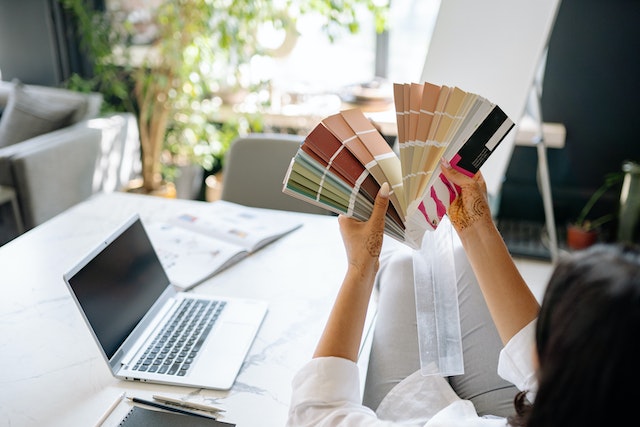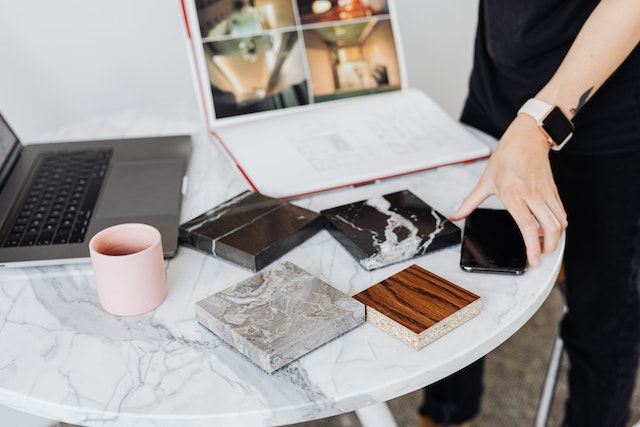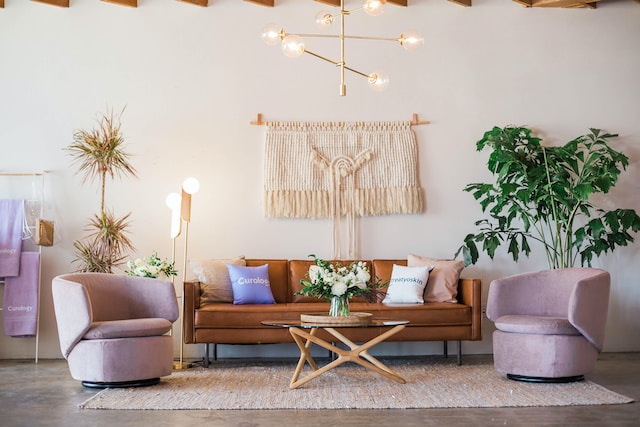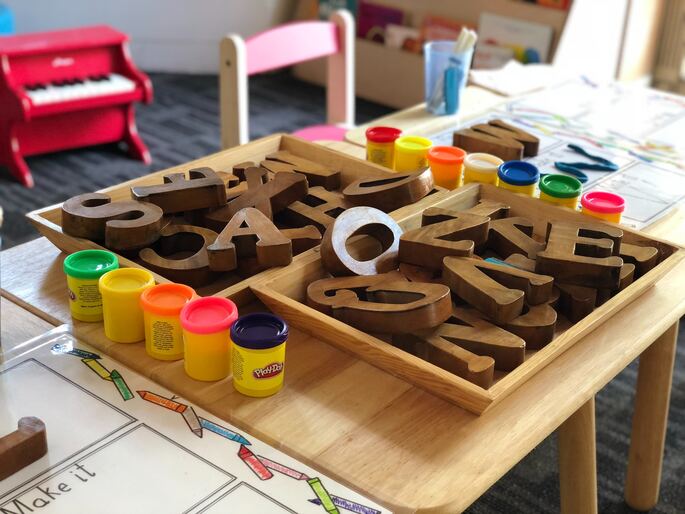Interior design apps and websites are the tools of the trade these days, but not so long ago, interior designers used pens and paper to convey ideas to their customers. It’s easier for aspiring individuals to break into a career as an interior designer today than it was 50 years ago due to degrees and other certifications often being offered completely online. The use of modern technology means that much of the job can take place online or, at the very least, on a computer.
Learn how you can become an interior designer online through the helpful tips, apps, and resources contained in this article.
How has interior design evolved online?
Interior design has undergone a significant transformation with the rise of online platforms, catering to the needs and preferences of different generations, including millennials and Gen Z. These tech-savvy generations have embraced the convenience and accessibility offered by interior design apps and websites.
The shift to online platforms has made it easier for aspiring individuals, including Gen Z, to pursue a career in interior design, with degrees and certifications now available entirely online. With modern technology, much of the interior design process can be conducted remotely, allowing designers to reach clients worldwide. This digital revolution has opened up new opportunities for collaboration, creativity, and market reach, shaping the future of interior design for generations to come.
Online interior design – often called eDesign – allows the designer to complete all aspects of their business, from marketing to project completion, almost entirely online and at a fraction of the cost of a traditional designer. Additionally, conducting business online doesn’t require you to stick to standard office hours, and the client doesn’t even need to be in the same area as the designer.
What you’ll need to get started
The first thing you need to get started as an online interior designer is a relevant education, but some prerequisites may be required as well:
- A good computer. You’ll need a computer with good graphics capability, so consider spending a little extra to get the right computer for your needs.
- Design software. There are a host of interior design apps available, but some of the most popular include AutoDesk AutoCAD, SmartPro, DraftSight, and Infurnia.
- A drawing tablet. Some work is best done with a stylus on a drawing tablet.
- A comfortable chair. You’ll be spending plenty of time in front of your computer, so having a comfortable chair is a good idea.
- A high-speed connection. Slow loading times are bad for conducting business online, so it’s a good idea to ensure you have a high-speed connection.
Tips for becoming an interior designer online
Starting down a career path, no matter what it is, inevitably begins with a period of not knowing what to do or how to do it. In this case, some sound advice or handy tips can go a long way toward making you feel less confused. Below is a selection of tips that may help you to set foot on the path toward becoming an interior designer online.
Develop your skills and knowledge
Apart from simply being familiar with the elements of design, an interior designer needs to be knowledgeable across a variety of subjects. Some of these include:
- Business processes
- Client communication
- Legal responsibilities
- Interior design components
- Problem-solving
- Visual representation
- Sketching
- History of art and architecture
- 2D and 3D design
- Furnishings
- Supplier requirements
- Permit processes
As an interior designer, it’s important to continually work to develop your skills and knowledge base, like embracing sustainable interior design concepts and the innovative realm of AI interior design. This will help you stay up to date with interior design styles and techniques. In addition to your education and training, it’s a good idea to seek out internships or apprenticeships with well-established firms to gain work experience and learn the tricks of the trade. Being able to learn from a professional designer is a valuable way to learn and gain insight into the field.
Take courses or pursue a degree in interior design
While you can certainly choose to complete a degree at an in-person school, there are plenty of online courses offered by accredited institutions. By learning online, you can fit the course load into your existing schedule, completing assignments and exams on your own time and in your own place. While most design firms require you to have at least a bachelor’s degree, it’s possible to pursue all your learning through online courses. Ultimately, it’s up to you how far you want to go with your education.
Stay up to date on design trends and software
A critical part of being an online interior designer involves actively keeping up to date with design trends, techniques, and software. You can use virtual reality devices to interact with your projects as you create them. VR allows you to “see” your project in 3D so you can better visualize how it may look in reality. As with many career paths, interior design is constantly evolving. New trends, new interior design apps, and programs are introduced frequently, so it’s important to ensure that your active learning continues.

Build your portfolio
Careers in interior design, whether online or traditional, rely heavily on good-quality interior design portfolios. At the start, you won’t have much to go on, but you can include images from your side projects, work done during your internship, or even coursework. Over time, you’ll be able to include better examples and won’t need to rely on your early work. Clients like to see examples of work you’ve done in the past. It lets them see exactly what you can do and whether you might be able to bring their interior design dreams to life.
Showcase your best work
Your interior design portfolio shouldn’t include samples of work that you aren’t entirely happy with. Include your best work that reflects your confidence and ability to create a stylish and pleasing interior. Poor samples won’t show your skills in the best light, and they tend to create doubt and a lack of confidence in your prospective client. Develop an organized interior design portfolio with a variety of projects that conveys your talents and style in a confident and competent manner.
Tailor your portfolio for potential clients
When you get a wide variety of projects under your belt, you can start tailoring your interior design portfolio to potential clients. This allows you to streamline your body of work so you can show your client only the work that relates to the project they want done. For example, if your potential client is looking for someone to act as an interior designer for their boutique hotel, they may not be interested in looking at your design for the interior of a pub.
Establish your online presence
An online interior designer should have a solid online presence. Establishing yourself online is something that happens over time, but a good place to start is by creating a quality website that lets the public know who you are and what you do. Think of it as being like an online resume. If you have an online presence, it’ll be easier for clients to find and connect with you for their next project. Aside from creating a website, you can also use social media and business listings to generate leads.
Create a website or blog
When setting up your website, it’s crucial to consider your target audience and purpose. Selecting your domain, for example, plays a vital role in creating a professional online presence that showcases your interior design expertise. As mentioned above, a website can act like an online resume. Aside from your contact details, you can introduce yourself and even include a gallery with photos from your best projects. Your website can also include a blog with entries about your personal journey, or it can include articles related to interior design that helps to establish your expertise. A blog with engaging content should not only bring potential clients to your website but also help solidify their decision to hire you.
Use social media to promote your services
Social media is an important and often under-utilized tool for marketing services. Social media allows you to engage with your potential clients more directly, making you more approachable. The best part about using social media is that your posts don’t have to be long. Often, a few well-chosen words will do. You may even use social media as a way to link potential clients to your website.
Promote your brand with email marketing
In addition to establishing your online presence through a website and social media, email marketing can be a powerful tool to promote your brand. By building an email list of interested prospects and clients, you can directly reach out to them with updates, special offers, and valuable content. Sending regular newsletters can keep your audience engaged and informed about your latest interior design projects, tips, and trends. With well-crafted emails, you can showcase your expertise, inspire potential clients, and nurture relationships, ultimately driving more business and referrals.

Apps and software for interior design
Online interior design could not exist without design apps, software, or websites. These tools – SmartPro, Infurnia, and others – allow online interior designers to create projects from their computer or tablet without having to rely on the traditional pen-and-paper method.
Some online tools can help streamline business processes, making it easier for you to track your projects, maintain client records, or send out invoices as needed. These design and business management tools help you to create designs for your clients and simplify the business side of things in a way that saves you time and money.
3D modeling and rendering software for interior design
There are a number of top-rated 3D modeling and rendering software to help designers to succeed in their careers. Here are three of the most top-rated 3D modeling and rendering software for interior design:
- AutoDesk AutoCAD. AutoCAD supports both 2D and 3D rendering and is popular with both interior designers and architects.
- Planner 5D. This tool is able to create floor plans and 3D renderings with an over 5,000 item catalog.
- Roomsketcher. As suggested by the name, this is a tool that allows you to render in 3D and create floor plans.
3D Component Search Engines
In addition to the 3D modeling and rendering software, designers can also leverage a 3D component search engine to find and incorporate pre-made 3D models, symbols, and footprints into their designs.
Virtual room planners
Here’s a quick list of the top three virtual room planners available to interior designers:
- SmartDraw. This tool can be used across all your devices and allows you to plan a space using relevant templates.
- RoomStyler 3D Home Planner. This tool offers a wide range of preloaded room templates for you to work with, as well as over 120,000 brand-name items.
- Sweet Home 3D. This tool offers a wide range of design choices, allowing you to customize them as you wish.
Online design collaboration tools
Here are three of the best online design collaboration tools:
- Asana. Asana offers many built-in tools to help you keep up with your workflow, including to-do lists, project boards, deadline reminders, and the ability to communicate with colleagues.
- Trello. Trello is a project management tool that uses a single interface to track your progress, organize your creativity, and share these details with others.
- Visme. Visme is browser-based. It collects all activities being conducted by your team into one convenient place. Visme also allows you to create visual aids like presentations and infographics.
Online resources for interior design
The online environment can provide an excellent range of resources for both aspiring and established online interior designers. Where traditional interior designers might clip magazines, browse furniture or fabric shops, and find their inspiration in more conventional ways, an online designer can access a wealth of resources at the click of a button. By simply scrolling through your social media or clicking links to various websites, you can find inspiration and materials just about anywhere online.
Design inspiration websites and blogs
There are many design inspiration websites and blogs online, but three of the most popular are Decorilla, Havenly, and Pinterest.
Decorilla is largely a matching service that pairs potential clients with the online interior designer best suited to their project. It also has a blog that contains a wealth of informative articles related to all things interior design.
Havenly is similar to Decorilla in that it functions as a designer/client matching service with articles about various aspects of interior design.
Pinterest is a social media platform that allows you to pin and share images of things you find interesting. Likewise, you can browse through other people’s boards to find images related to virtually any subject matter.

Online marketplaces for furniture and décor
The beauty of the online environment is that it can take away the need to be physically present, whether you’re communicating with a client or buying something. Online marketplaces offer furniture and décor items that may be hard to find in stores.
A number of marketplaces are specifically geared toward interior designers, such as MyObjectOfDesire.com, Artemest, and 1stDibs. These sites offer a variety of furniture and other interior décor items, acting as a sort of “one-stop shop.” There are also budget-friendly online marketplaces, such as Facebook Marketplace, eBay, and Amazon. In these cases, you have the option to buy new or gently used, often at a substantial discount.
Professional organizations for interior designers
Belonging to a professional organization is a good way to establish yourself as just that: a professional. Membership with these organizations, such as the American Society of Interior Designers, the Interior Design Society, and the US Green Building Council, affords you a certain amount of prestige and can pave the way to bigger and better contracts. Being a member of a professional organization also helps you liaise with other professionals and create networks to help build your business.
Finding work
Now that you’ve gotten the relevant education and licenses and built an online presence, it’s time for the tricky bit: finding work. Fortunately, there are a few ways you can go about populating your schedule, including:
- Browsing online job listings. While this may yield more traditional interior design jobs, you may also find online interior design jobs this way.
- Create a LinkedIn profile. LinkedIn is a popular choice for professionals looking to network and build their business. By creating a profile and browsing the job listings, you can find your next project or permanent job.
- Build your reputation. By giving your best to your clients and taking steps to build your reputation, you can establish yourself as a go-to interior designer.

Becoming a successful online interior designer is a process that takes time, but it doesn’t have to be impossible. With a go-getter attitude and the various tips contained in this article, you can build a truly satisfying career in interior design. Think about what you want to accomplish, then take the first step and look for apps, online courses, and other ways to get your career started.




